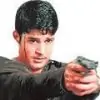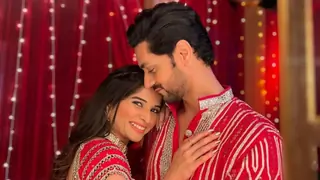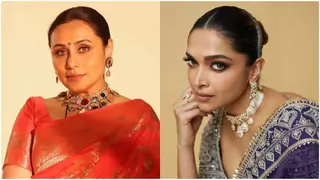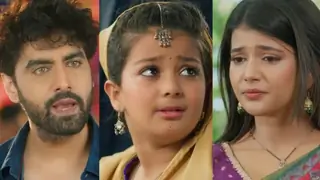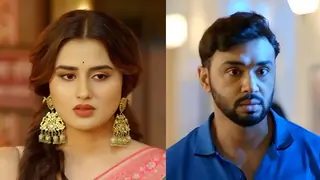Found this article from my lot. interesting one so thought of sharing.
************************************************************ ***
The birth of a Film Song
by Nalin Shah
In early 1931 when Ardeshir Irani recorded the first film song through a warmed-up carbon microphone, he probably did not realise that he was creating history. The sound had, at last, broken the silence in 'Hundred percent talking picture' (as advertised) in 'Alam Ara'. It also ended the careers of many goodlooking Anglo-Indian damsels who had to make way for the professional singing girls. Sulochana (Ruby Meyers) who was the highest paid actress, earning Rs 5,000 a month, and D Bilimoria, the actor of the masses, had to be replaced by Master Vithal and Zubeida in the first talkie only because the latter could sing and talk fluent Hindi.
Since that day, nearly 60,000 songs have been composed. This fact bears testimony to the importance of music in the success of films at the box office. Do we have a cultural personality in music? Art reflects the times and the forms of expression change with the passage of time. It is this change which keeps the art alive. The classical music we hear today is not what it was in the past. The musical expressions in films too have changed considerably compared to what they were in the '30s.
Film music in those days had a strong classical base as did the composers. Govind Rao Tembe of Prabhat was a disciple of Alladiya Khan, Timir Baran of New Theatres studied under Allauddin Khan, Ramchandra Pal of Bombay Talkies was trained by Badal Khan, and Saraswati Devi studied under V N Bhatkhande and Keshav Rao Bhole, R C Boral, Zende Khan, Ghulam Hyder and Pandit Amarnath also had an impressive classical background.
What was significant about the music of the '30s was the simplicity of the compositions and minimal use of the musical instruments. The eminent vocalist Phiroz Dastur sang 'Kalok tori nazaria' and 'Jao sidharo falha pavo' in 'Lal-e-Yaman'(1933) which were pure classical 'bandish'. From the very first talking film, songs became an indispensable part of the film, mainly because the Indian audience, since time immemorial, had been conditioned and made receptive by the popular musical folklores in forms of nautanki, tamasha, kirtan, etc.
The film 'Indrasabha' in 1932, to illustrate the point, had 71 songs. Gradual revolution in the gramophone industry also played a major role in popularising film songs. The manually rotating machine marketed in 1900 was soon replaced by the spring-motor. Recording on wax, in 1901, gave further impetus to the industry. The gramophone was still considered a status symbol, hence beyond the reach of the common man. Fortunately for the film makers, by the time the first song was recorded, the electrical recording which could control the voice and the sound of the musical instruments was already invented.
The invasion of cheap Japanese gramophones made music easily accessible. Prabhat, Bombay Talkies, and New Theatres attained respectability and achieved tremendous success in the late'30s. The combination of a good voice, a charming face and an ability to act was a rare phenomenon and Shanta Apte had all these in ample measure which probably accounts foe the tremendous popularity of her songs. For example 'Kamsinon ke dil pe' (Amrit Manthan'- Keshav Rao Bhole - 1934),'Ab maine jana hai' and 'Suno suno, banke prani' (both 'Amar Jyoti'- Master Krishna Rao - 1936).
Unlike Ranjit Movietone, which presented a mixed fare of romance, history, mythology and stunt, Prabhat stuck to the devotional, the social, and exploited the traditional folk music of Maharashtra. Amongst the singers Sunderabai, Vishnu Pant Pagnis, Raikumari, Kantilal, Amirbai, Wahidenbai held sway. The composers of the period leaned heavily on classical music without any orchestral embellishment, while composing for films. Khorshed Homji, popularly known as Saraswati Devi, became the first woman music director. She effectively used her classical ragas while composing for Bombay Talkies' films. Though New Theatres had started the vogue of playback singing with 'Dhoop Chhaon'(1935), Saraswati Devi experimented with it while singing 'Kit gaye ho khaivan haar' in 'Achhoot Kanya'(1936) while her sister Manek, known as Chandraprabha, acted. The song was immensely popular, and so was 'Main ban ki chidiya' in the same film sung by Ashok Kumar and Devika Rani. It is significant to note that both were unknown singers and had to rehearse the nursery rhymelike song for hours before it was finally recorded.
Listeners adored the simple, sweet melodies in 'Sooni padire sitar' (Leela Chitnis -'Kangan'- 1939) and 'Piyu piyu bol' (Pradeep -'Bandhan'- 1940). Bombay Talkies did not have any reputed singer in its fold except, perhaps, Pradeep and Arun Kumar, who entered at the fag end of the decade. The orchestra at that time consisted of tabla, sarangi, sitar, flute, organ and violin. Saraswati Devi made generous use of jaltarang and her use of chaste classical 'bandish' for songs matched the theatre atmosphere of the '30s. Ramchandra Pal, who created lilting melodies in 'Chal chal re navjawan' in 'Bandhan'(1940) and 'Nacho nacho pyare man ke mor' in 'Punar Milan'(1940), claims to have introduced Western instruments in 'Bandhan' title music. In fact, it was an extension of the experiment carried out by Anil Biswas (Sagar Movietone) who employed Goan musicians popularly known as Dhobi Talaowallas (because of their concentration in that area).
Anil Biswas gave his first hit in 'Jagirdar' in 1937 ('Banke bihari bhool na jana', 'Nadi kinare baith ke') both by Maya and Motilal and 'Pujari more mandir men aao' by Surendra and Bibbo. 'Mahageet'(1937) and 'Gramophone Singer' (1938) became popular with the masses.. The Western rhythm of 'Hum aur tum aur yeh khushi' ('Ali Baba'- 1940 - Wahidenbai,Surendra) is fondly remembered by old timers even today.
The experiment to modernise the orchestra was followed successfully by Pankaj Mullick in 'Chale pawan ki chal ('Doctor'- 1941) and 'Pran chahe nain na chahe'. New Theatres had better equipped studios, competent recordist in Mukul Bose and a formidable team of singers and composers in R C Boral, Pankaj Mullick, Saigal, Kanan Devi, Pahari Sanyal, K C Dey, Timir Baran and Asit Baran. In spite of all the efforts of Anil Biswas, Surendra in Bombay remained a poor substitute for Saigal Pankaj Mullick in 'Mukti' (1937), 'Dhartimata'(1938), 'Dushman'(1938), 'Mabal Kundala' (1939),'Nartaki'(1940) and 'Doctor'(1941) and R C Boral-Saigal team in 'Chandidas' (1934), 'President' (1937), made the Elephant banner of New Theatres a symbol of excellence amongst the discerning audience.
Timir Baran's soulful music in 'Devdas' (1935) ('Dukh ke din' and Balam aye baso') presented Saigal in the image of eternal lover. 'Street Singer' (1938) created a romantic pair in Saigal and Kanan ('Lachhmi moorat' and 'Hamari nagariyan men'). Saigal 'Babul mora' in Raaga Bhairavi left an indelible mark on the minds of the listeners.Apart from the fact that New Theatres explored the magnificent treasury of contemporary Bengali literature and boasted of the creative team of composers and singers and poets like Arzo and Kidar Sharma, what made it an unforgettable experience was its heavy dependence on Rabindra Sangeet. Rabindranath Tagore drew his inspiration from the choral music in church, Indian classical ragas and the folk music of Bengal known as Bhatiyali. The essence of that inspiration gave birth to the Rabindra Sangeet in the form of nearly 3,000 compositions which inspired Rai Chand Boral, Pankaj Mullick and Kamal Das Gupta to create some memorable tunes to enrich the repertoire of H indi film music.
During the '40s, the musjc scene in Bombay and Pune underwent a visible change but New Theatres continued its proud tradition in music with 'Saugand' ('Ab aai basant bahar'- Asit Baran and Boral - 1942). 'My Sister' ('Do naina matware', 'Chhupona chhupona 0 pyari', both Saigal and Punkaj Mullick -1944), 'Wasiyat-nama' ('Kahe man bechain sajni' -Asit Baran, and 'Guzar gai hai chaman ki bahar'- Boral - 1945) and 'Yatrik' ('Tu dhoondhta hai jisko' and 'Dilwale', both Dhananjay Bhattacharya)and 'Prem lagana chahire' ('Binota Chakravarty and Pankaj Mullick-1952).
A devastating fire in 1940 in New Theatres Studios did not break the spirit of its founder B N Sircar but the changing values in art and life did disillusion him, spelling the doom of the prestigious institution in 1956.
The advent of the '40s inundated the eerie world of Hindi film music with a torrent of melodies which had force, and a feeling never experienced before. Dentist-turned-composer Master Ghulam Hyder of Pancholi (Lahore) who made his debut in 1935 suddenly burst upon the scene with the spirited and rhythmic Punjabi folk music in 'Khajnchi' (1941), 'Sawan Ke Nazare Hai' (Ghulam Hyder and chorus) was a rage. The film overflowed with the high- pitched and robust voice of Shamshad ('Ek kali nazonki pali', 'Laut gayi papan andhiyari'). Ghulam Hyder followed up the unprecedented success of 'Khazanchi' with 'Khandan' in 1942. Noor Jehan who was earlier introduced as a juvenile artiste in Punjabi 'Heer Sayal' in 1938, captivated listeners with thehaunting sweetness of her voice in 'Tu kaunsi badli men mere chand ai aaja' sadness in 'Mere liye jahan men'- based on Punjabi Marsai (dirge) - deepens when expressed in the inimitable voice of Noor Jehan. She continued her triumphant march with 'Kis tarha bhulega dil' and 'Baithi hun teri yaad ka lekar ke sahara'. 'Gaon Ki Gori'- (Shyam Sunder - 1945) and K Dutta's pathos-laden strain in 'Badi Maa' (1945) such as 'Aa intezar hai tera', 'Diya jalakar aag bujhaya, and the depth of sorrow in 'Kisi tarah se mohabat men chain paa na sake' has endowed the composition an ageless charm.
'Zeenat' (Hafiz Khan - 1945) was an unforgettable experience with her pathetic cry in 'Bulbulon mat ro yahan', the song Lata Mangeshkar sang for an audition. 'Anmol Ghadi' (Naushad - 1946) brought a torrent of melodies in 'Mere bachpan ke sathi mujhe', 'Kya mil gaya Bhagwan' and 'Awaz de kahan hai' (with Surendra). 'Jugnu' (Firoz Nizami), was Noor Jehan's last memorable film in India which had an all time hit in 'Yahan badla wafa ka', a duet which spelt a meteoric rise for Rafi. It was a sad finale when she sang 'Hame to sham-e-gham men katni hai zindagi apni' to close the glorious chapter in her music-career. It was not a quirk of history that she came to be known as 'Malika-e-Tarannum.
The '40s turned out to be the most fruitful period in the history of Hindi film music. The influence of the stage and the constraints of the recording system played a major role in shaping the musical form during the greater part of the '30s. Even some of the die-hard classicists, who adopted an uncompromising attitude in the matter of the traditional classical music, could not withstand the gust of the new age cultural phenomenon, Music director Keshavrao Bhole, the purist from Prabhat frowned upon the music of 'Nai Kahani' (Prabhat- 1944), though Shyam Sundor had composed captivating melodies, 'Neend hamari khwab tumhare'- Durrani, Balakram and 'Ab khizan aye na aye -Durrani.
In spite of the tremendous popularity of the songs, the Prabhat-purist considered, the music a violation of the sacred tradition of Prabhat. While expressing his unhappiness, Keshavrao Bhole did not realise that the music was the reflection of the time. It was at this time (1942) that SaigaI migrated to Bombay to play 'Bhakta Surdas' (Ranjit Movietone). The film was notable for Gyan Dutt's scintillating score. Saigal was at his luring best when he sang 'Maiya mori main nahin makhan khayo'. 'Madhukar Shyam hamare chor', 'Nain heen ko raah deekha Prabhu', is a bhajan endowed with eternal appeal. Saigal continued to cast his spell but the evil spirit of Bombay's film world did not spare this minstrel. His health was failing. Khemchand Prakash, the master of classical and Rajasthan folk music, scored a memorable music in 'Tansen' (11943). Saigal was all pervading. He sang without a trace of illness in 'Shahjahan' (Naushad -1946).'Gham diye mustaqil' and Jab dil hi toot gaya' are popular to this day.
Director Kardar sadly remembers how it took him 8 days to shoot just one song 'Kar lijiye chalkar meri jannat ke nazare' because, ill that he was, Saigal could not walk.'Parwana' (Toot gaye sab sapne mere'- Khurshid Anwar - 1947) was the last film. After 28 films and 250 songs, the Saigal legend came to an end on January 18,1947, at the young age of 43.
While the wind of change was blowing, Anil Biswas, like Ghulam Hyder, created a musical revolution with 'Basant' (Bombay Talkies - 1942). His sister Parul Ghosh (wife of flautist Pannalal Ghosh) sang the sad re-train 'Ummeend unse kya thi', 'Humko hai pyari hamari galiyan' (Parul and Suresh), became a rage with the listeners.The music, however, was credited to Pannalal Ghosh since Anil Biswas was under contract with National Studios.
'Kismat (1943), following in the wake of 'Basant' success, created history. Every song was a hit which helped the film to run for more than 3 years in a single theatre (Roxy) in Calcutta. The pathetic cry of a love-lorn lover 'Pahpihare, (Parul Ghosh), and 'Ghar ghar, men diwali hai (Amirbai) held the audience spell-bound. 'Sanjh ki bela panchi akela', in 'Jwar Bhata' is a classic example of rhythm and harmony creating evening hues on horizon. The master of classical and Rabindra Sangit, Anil Biswas continued to surge forward in the grooves of time effortlessly without sacrificing the quality. He made Mukesh's career with 'Dil jalta hai'('Paheli Nazar'- 1945) and introduced Talat (Ai dil mujhe aisi jagah le chal' -Arzoo-1950). The pathos in the voice of Meena Kapoor (Mere liye woh ghame intezar chhod gaye- Anokha Pyar- 1948) and the sweetness in 'Tumhi kaho mera man kyunrahe' (Lata - 'Girl School' - 1946-49) illustrate the rare ability of the composer as a creative artiste. The '40s may easily be considered a blessed period in the history of film music.
The musical firmament was adorned by luminous stars like Amirbai ('Chanda desh piya ke ja' and 'Bharthuhari'), '0 roothe huve Bhagwan' ('Sindoor - both Khemchand Prakash, Zohranjan Ambalewali ('Akhiyan milake'-'Ratan'- Naushad and Zeenat Begum), ('Sun tu meri ilteza'- 'Nek Parvin'- Firoz Nizami), Naseem Akhtar ('Panchhi meri khushika zamana' - 'Chand' - Husnalal - Bhagatram'), S D Batish ('Khamosh nigahen ye sunati hai'- 'Daasi' - Pandit Amamath), Raj Kumari ('Kali ghata chhai ho raja' - 'Panna' - Amir Ali), S D Batish- Geeta Roy ('Mera sunder sapna'- 'Do Bhai'- S D Burman), Khurshid ('Barasore'- 'Tansen'- Khemchand Prakash), Sitara of Kanpur (Pardesi kyun yaad aata hai'- Man Ki Jeet'- S K Pal), Meena Kapur (Kisise meri preet lagi'- '8 days' - S D Burman), Suraiya ('Beech bahnwarmen' - 'Dard'- Naushad).
The talented composers of the period made melody reign supreme. Pandit Amarnath, director of HMV orchestra, was one of the highly-rated music directors. He gave a classical touch to the emotion-laden compositions ('Daasi'). His younger brothers Husnalal and Bhagatram, entered in 1944 with 'Chand' ('Do dilon ko yeh duniya'- 'Manju'). The placid pace of life had suddenly disappeared and the talented and creative com-posers of the period were in search of new forms, ideas, expressions and innovations. Naushad who made his debut in 1940 with 'Prem Nagar' sprang a surprise with 'Ratan' in1944. It was a significant film as it gave further impetus to the catchy rhythmic compositions.
Karan Diwan, an indifferent singer, sang a hummable hit 'Jab tumhi chale pardes'. The music was an extension of the trend started with 'Khazanchi' by Ghulam Hyder who remained a model for the most of the later period composers. Naushad, with his 'Man Friday', Ghulam Mohammad, continued his march with 'Anmol Ghadi', 'Anokhi Ada', 'Mela', 'Chandni Raat', 'Dillagi' and 'Dard'. Having worked under Ustad Zande Khan ('Chitralekha'- 1941) and Khemchand Prakash, Naushad had a classical base and made effective use of the folk music of Uttar Pradesh.The exponent of classical music, S N Tripathi, an old guard of Bombay Talkies, came up with a hit in 'Panghat' (1943). S D Burman, an excellent composer but weak in orchestration, had to be helped by C Ramchandra. He gave popular tunes in 'Shikari', '8 Days' (both 1943), 'Do Bhai' (1947), 'Shabnam' (1949) and in the later period made Rabindra Sangeet his magic wand for success.
On the other hand, C Ramchandra attempted to be different, in keeping with the times when he composed 'Aana meri jaan Sunday ki Sunday' in 'Shehnai' (1947). He invited the wrath of his guru Anil Biswas but nevertheless got his blessings when he convinced him about his need to have his own identity. Even the composers who had brought in spicy music frowned upon his frivolous compositions in 'Safar', 'Shehnai', 'Samadhi', 'Patanga' and 'Nadiya Ke Paar'. But public recognition is what he cared for and he got it in good measure. While Roshan held promise with 'Bawre Nain' and Vasant Desai with 'Shakuntala', he tried to be different in 'Apna Desh'. It was Shyam Sunder who held his sway over the masses and the discerning listeners, too.
Bulo C Rani who made his appearance on the musical scene with a heart-rending melody in the robust voice of Amirbai 'Gar humko jalaoge' ('Pagli Duniya' - 1944) presented the sensuous voice (Vishni Lal) 'Badi bhool huyi tujhe pyar kiya' ('Magroor') based on Sindhi melody. While talking of music and musicians we cannot lose sight of the lyricist Dinanath Madhok and the poet-singer Pradeep who influenced the composers and their work. Pradeep who began his career with 'Kangan' (1939) singing 'Main to aarti utaroon Radhe Shyam ki', he was in the habit of fitting words in the melodic structure of the popular tunes of his liking with his own brand of variation. He had a deep sense of rhythm and melody and composers invariably accepted his version as final.
Likewise D N Madhok was as good a composer as a lyricist. Music of the rustic Punjab was flowing in his veins. Many a well-known composer earned fame and fortune by taking credit for the compositions which D N Madhok sang to him by tapping his fingers on his cigarette tin.
The passage of time cannot break the spell of the '40s. Looking back, one wonders why there was a sudden influx of new melodies. The answers could be many and all relevant. The music directors were coming out of the shackles of the stage influence. The pace of life increased, the recording technique improved, but what was more significant was that the war affected the life and culture of the society in a big way. Many independent producers had cropped up to absorb their war-time profits. The artistes started breaking away from the institutions for better returns which dealt a severe blow to even the prestigious institutions like National Theatres, Bombay Talkies and Prabhat. The puritan standards of the '30s were suddenly replaced by more permissiveness and gay abandon. Music did not remain confined to the drawing rooms of the affluent class only, but projected the mood, hopes and aspirations of the common man.
Though classical music continued to hold sway as the legacy of the rich musical past, listeners were fascinated by the force and the sweetness of the Punjabi, Rajasthani and the UP folklore and the eternal Rabindra Sangeet. Music directors often envied a good composition by a rival and the reason why there was so much variety in music was that each song was fashioned with care keeping in view the range, depth and quality of the voice.
Amirbai, Raj Kumari, Shamshad, Noor Jehan, Suraiya, Zohra and Geeta all had their particular brand of sweetness which helped the composer to paint musical scenes in varied hues. When Lata and Rafi appeared on the musical horizon, the talented and the inspired composers of the period got the much needed range and the rare opportunity to explore the intricacies of the musical scale. Master Ghulam Hyder who could not use Lata's voice in Filmisthan's 'Shaheed', as the producer S Mukherji found it too shrill, presented her in BT's 'Majboor' ('Dil mera toda'- 1948) and a legend was born. Pandit Amarnath and K L Saigal died in 1947. Partition snatched away Noor Jehan, Master Ghulam Hyder, Firoz Nizami, Khurshed, Naushad (Shaukat Dehlvi) and Roshan Ara. India was torn apart. It was a severe blow to the Hindi film music culture especially at a time when Magnetic Recording held promise to further revolutionise the music world.















